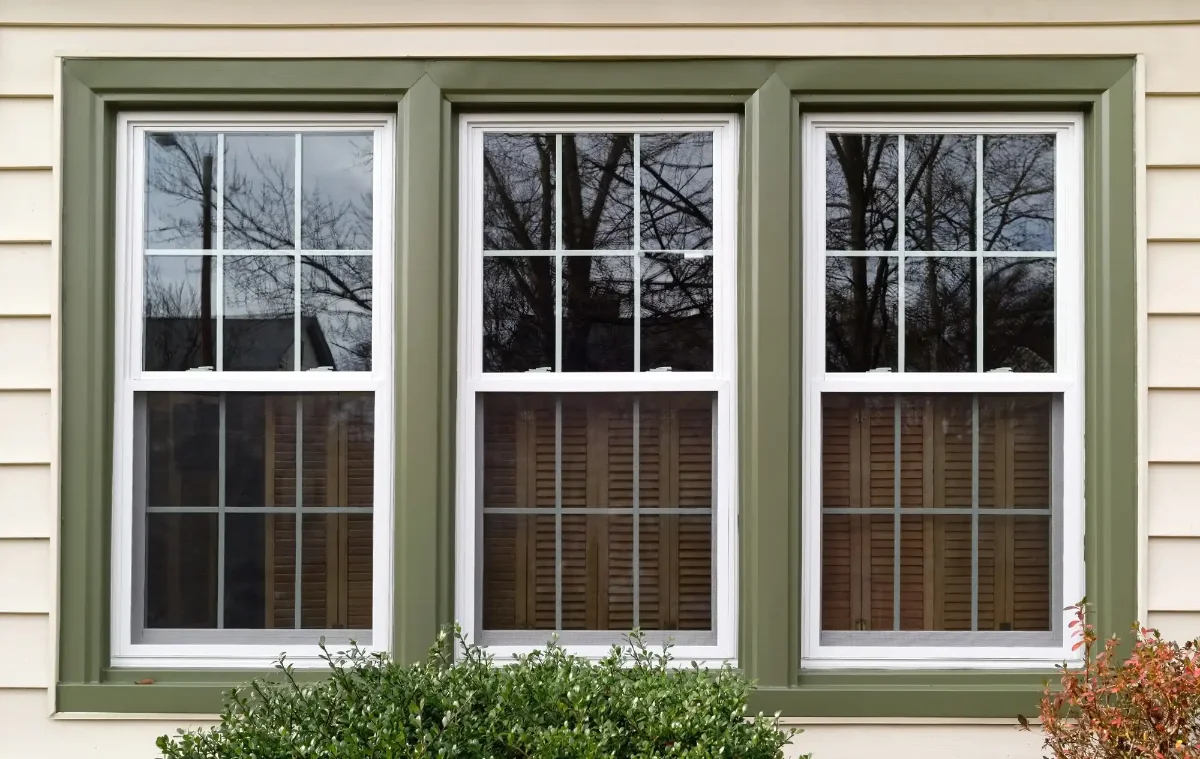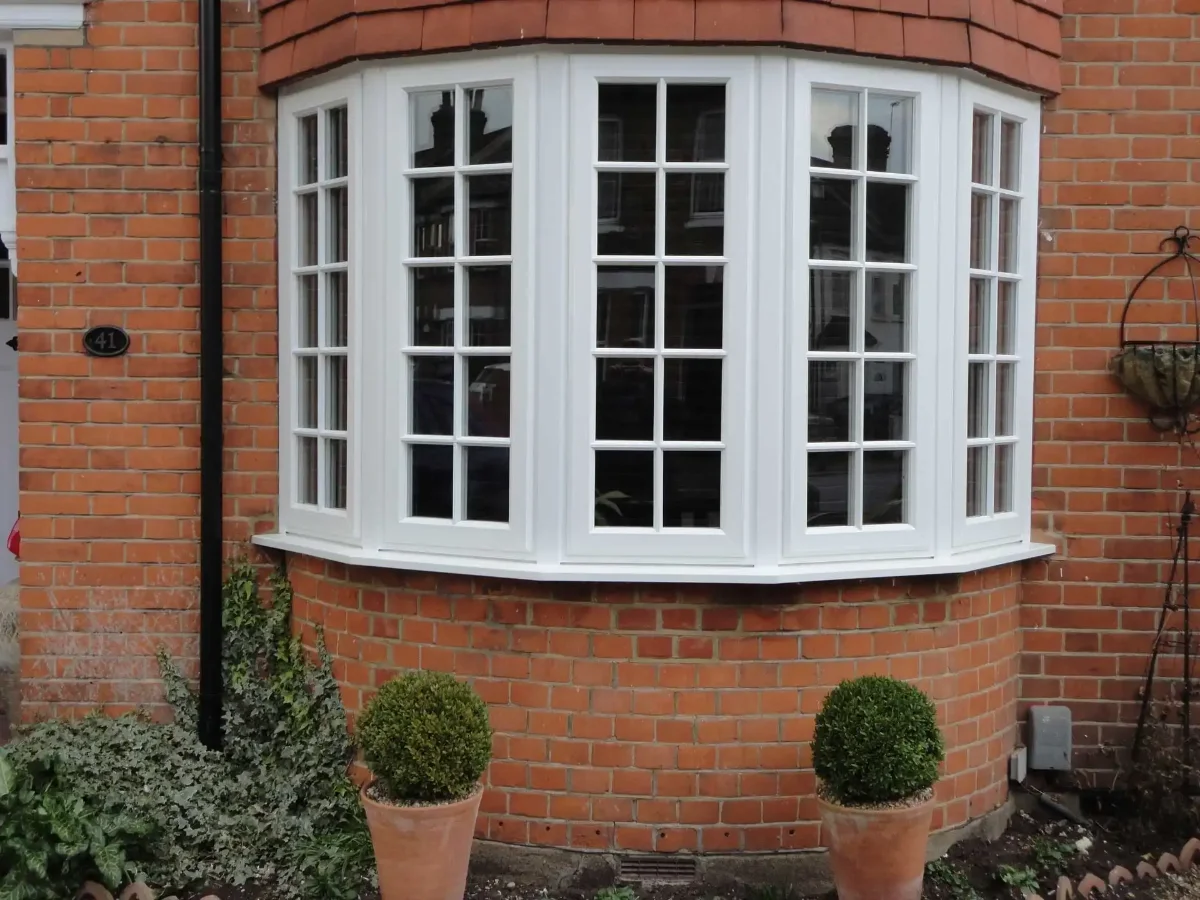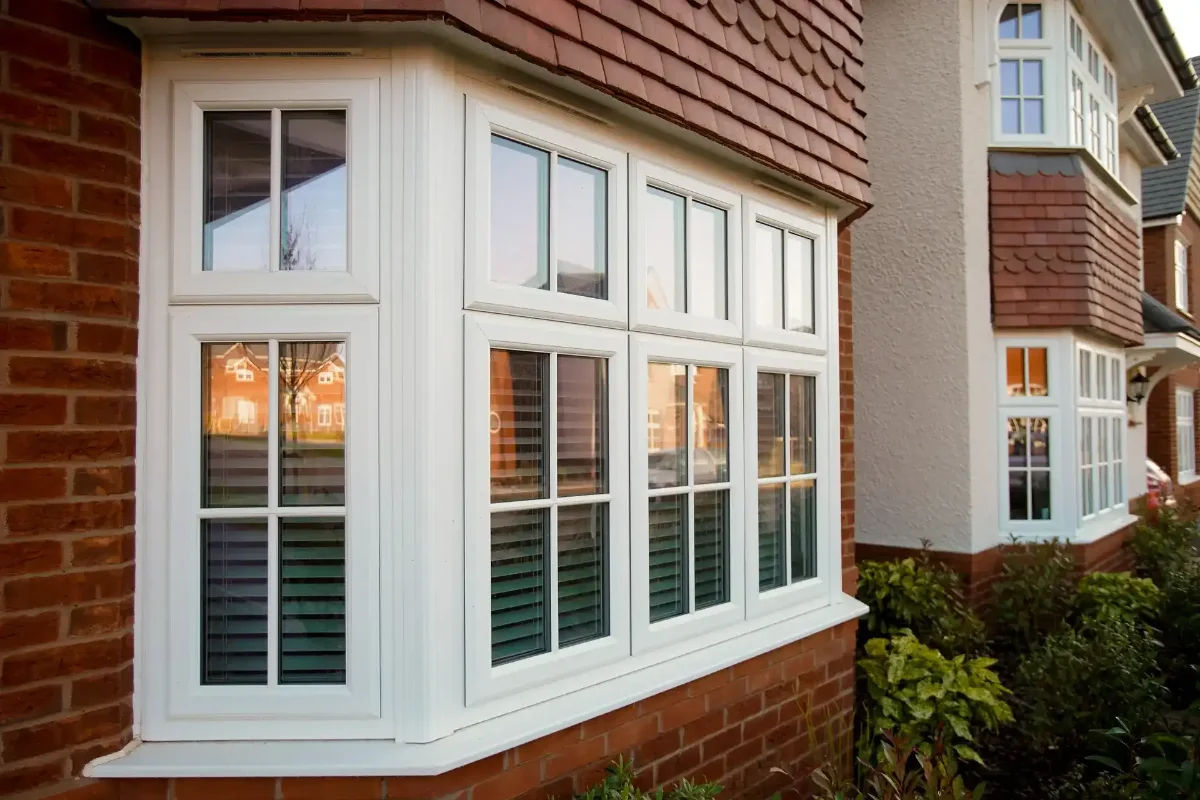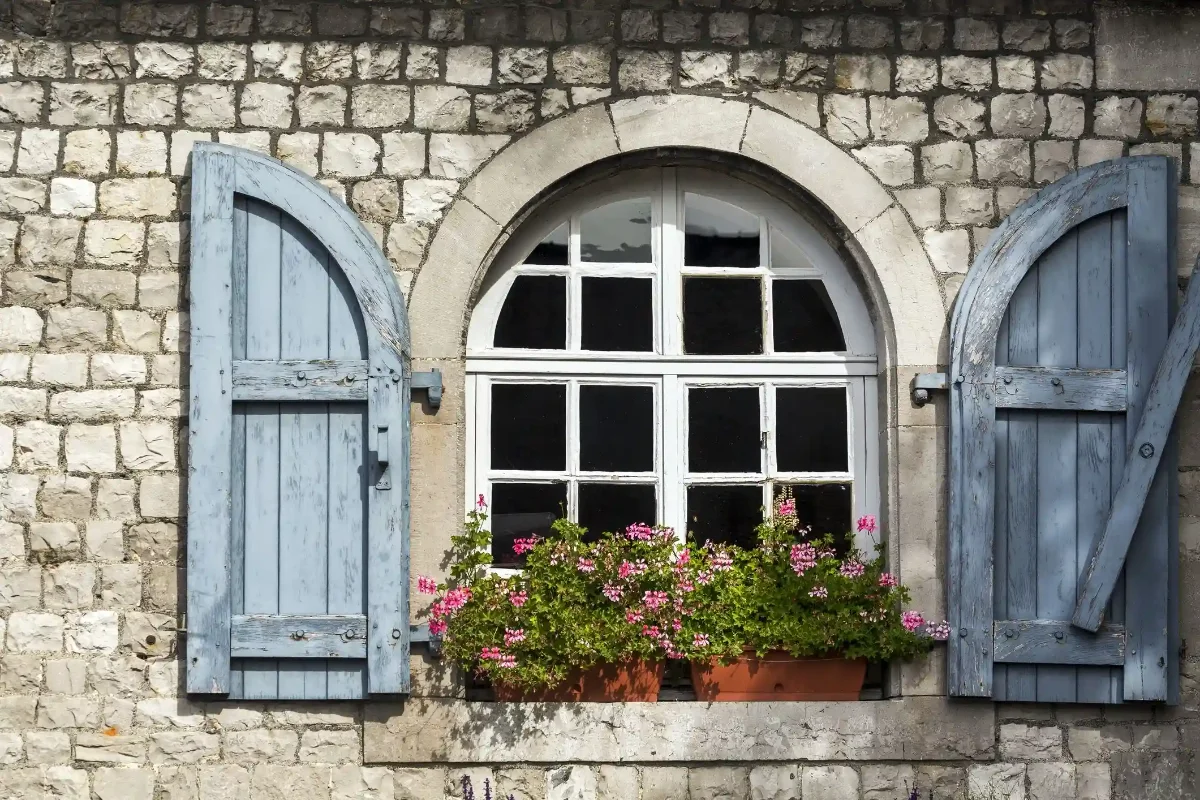Your Windows: The Eyes of Your Home’s Value
Your windows don’t just let light in – they’re the single most visible feature that defines your home’s character and market appeal. In my 38 years in the UK window industry, I’ve seen how the right window choices can transform both curb appeal and property value, while poor decisions can cost homeowners thousands in lost equity.
I’m Oliver Greene, and today I’ll reveal exactly how window frames impact your property’s value, which materials and styles deliver the best return on investment, and the costly mistakes that can actually reduce your home’s worth.
Whether you’re planning to sell soon or simply want to enhance your home’s appeal, understanding the relationship between windows and property value is crucial for making smart investment decisions.
For comprehensive information on different window materials, explore our detailed guides on timber windows and uPVC windows. To understand the full cost implications, see our window installation cost guide.
Ready to boost your property value with the perfect windows? Get your free virtual design consultation and discover which frame styles and materials will deliver maximum curb appeal and return on investment for your Hertfordshire home.
The Science Behind Windows and Property Value
Market Research Reveals the Truth
Recent studies by major UK estate agents consistently show that quality window upgrades deliver measurable returns:
- Energy efficiency improvements: Add 3-5% to property value
- Aesthetic enhancements: Boost market appeal by 8-12%
- Period-appropriate upgrades: Can add 10-15% for heritage properties
- Combined impact: Quality windows typically return 70-85% of investment cost
Case Study: A Bishop’s Stortford Victorian terrace increased from £485,000 to £518,000 after a £14,000 timber sash window upgrade – a 6.8% value increase that exceeded the renovation cost.
Why Windows Matter More Than Other Improvements
Unlike kitchen or bathroom renovations that buyers might want to change, quality windows are:
- Immediately visible from the street
- Long-term investments (25+ year lifespan)
- Functional necessities every buyer appreciates
- Energy savers that reduce ongoing costs
Frame Materials: The Value Hierarchy
Premium Tier: Timber Windows
Value Impact: Highest long-term appreciation, especially for period properties
Why Timber Wins:
- Authenticity: Original material for pre-1960s homes
- Craftsmanship appeal: Shows quality investment to buyers
- Longevity: Well-maintained timber lasts 60+ years
- Flexibility: Can be painted any colour to match trends
Investment Reality: Timber windows cost 40-60% more than uPVC but can add 15-20% more to property value in the right context.
Best For: Georgian, Victorian, and Edwardian properties; countryside locations; conservation areas
For detailed timber window information, see our comprehensive timber windows guide.
Mid-Tier: Quality Aluminium Windows
Value Impact: Strong appeal for modern and contemporary properties
Aluminium Advantages:
- Sleek aesthetics: Slim profiles maximize glass area
- Durability: 30+ year lifespan with minimal maintenance
- Colour options: Powder coating in any RAL colour
- Security: Inherently strong material
Market Position: Aluminium windows cost 20-30% more than uPVC but appeal strongly to buyers seeking modern, low-maintenance solutions.
Best For: 1960s+ properties, modern extensions, minimalist design preferences
Entry Tier: Quality uPVC Windows
Value Impact: Solid return on investment for most property types
uPVC Strengths:
- Cost-effectiveness: Best performance per pound invested
- Energy efficiency: Excellent insulation properties
- Low maintenance: No painting or treatment required
- Broad appeal: Accepted by most buyers
Quality Warning: Premium uPVC with quality hardware and finishes delivers good value. Cheap uPVC can actually reduce property appeal and value.
Best For: 1970s+ properties, rental investments, budget-conscious improvements
For detailed uPVC information, explore our uPVC windows guide.
Colour Psychology and Property Value
The Safe Choices: Maximum Broad Appeal
White/Cream Windows:
- Market position: Appeals to 85%+ of buyers
- Timeless: Never goes out of style
- Versatile: Works with any exterior colour
- Maintenance: Shows dirt but easy to clean
Anthracite Grey:
- Modern appeal: Increasingly popular choice
- Sophisticated: Elevates property appearance
- Versatile: Complements most architectural styles
- Durability: Hides minor marks and weathering
The Character Choices: Higher Risk, Higher Reward
Black Windows:
- Impact: Dramatic, contemporary statement
- Risk: Can overwhelm smaller properties
- Maintenance: Shows dust and water marks
- Market: Appeals to design-conscious buyers
Green/Blue Windows:
- Heritage appeal: Traditional for period properties
- Limited market: Fewer buyers appreciate bold colours
- Regional preferences: More accepted in rural areas
- Resale consideration: May require repainting for sale
Colour Mistakes That Cost Money
Golden Oak uPVC: Screams “1990s renovation” – avoid completely
Bright colours: Fun but limit buyer appeal significantly
Mismatched frames: Different colours on same property look unprofessional
Cheap paint finishes: Fade quickly and look tired within 5 years
Window Styles That Enhance Property Character
Georgian Properties (1714-1830)
Value-Enhancing Choices:
- Sliding sash windows with slim glazing bars
- 6-over-6 or 8-over-8 pane configurations
- White or cream frames for authenticity
- Slim profiles that respect original proportions
Value-Destroying Mistakes:
- Modern casement windows in Georgian properties
- Thick uPVC frames that overwhelm delicate proportions
- No glazing bars or inappropriate configurations
Victorian Properties (1837-1901)
Optimal Styles:
- Two-over-two sash windows for main floors
- Single-pane sashes for upper floors
- Bay windows where original features existed
- Decorative glazing bars in upper sashes only
Common Errors:
- Replacing original bays with flat windows
- Using modern proportions that don’t match period details
- Inappropriate glazing bar patterns
1930s Properties
Perfect Matches:
- Casement windows with horizontal glazing bars
- Art Deco inspired curved corner windows
- Steel window styling in aluminium or timber
- Coloured frames (green, blue) where appropriate
Modern Properties (1960s+)
Contemporary Options:
- Large picture windows for maximum light
- Minimal frames to emphasize glass area
- Aluminium or high-quality uPVC for clean lines
- Floor-to-ceiling glazing where structurally possible
The ROI Reality: What Returns Can You Expect?
Immediate Value Additions
Energy Efficiency Improvements:
- Upgrading from single to A-rated double glazing: +£8,000-£15,000 property value
- Triple glazing in premium properties: +£3,000-£8,000 additional value
- Smart glass features: +£2,000-£5,000 for tech-savvy buyers
Aesthetic Enhancements:
- Period-appropriate window restoration: +10-15% property value
- Modern aluminium upgrade in contemporary home: +5-8% value increase
- Quality uPVC replacement in standard property: +3-5% value boost
Long-Term Value Protection
Maintenance Savings:
- Quality windows reduce annual maintenance costs by £200-£500
- Energy savings of £300-£800 annually improve property attractiveness
- 25+ year lifespan means no replacement concerns for buyers
Market Positioning:
- Properties with quality windows sell 15-25% faster
- Reduced negotiation on price due to obvious quality investment
- Higher buyer interest and viewing-to-offer conversion rates
Regional Considerations for Hertfordshire Properties
Bishop’s Stortford Specific Factors
Conservation Areas:
- Many areas require planning permission for window changes
- Period-appropriate styles essential for value retention
- Quality timber often mandatory for listed buildings
Local Market Preferences:
- Strong preference for traditional styling in historic areas
- Modern aluminium accepted in newer developments
- Energy efficiency increasingly important to buyers
Climate Considerations:
- East Hertfordshire weather patterns favour durable materials
- Quality sealing essential for local wind exposure
- Maintenance access important for upper floor windows
Common Value-Destroying Mistakes
The “False Economy” Trap
Cheap Windows: Saving £3,000 on window quality can cost £8,000 in lost property value Poor Installation: Even quality windows lose value if poorly fitted Inappropriate Styles: Modern windows in period properties can reduce value by 5-10%
Maintenance Neglect
Visible Deterioration: Peeling paint, broken seals, or damaged frames signal neglect Security Concerns: Old or damaged windows worry buyers about safety Energy Waste: Poor-performing windows increase buyer concerns about running costs
Planning Permission Oversights
Unauthorised Changes: Can force expensive corrections before sale Conservation Area Violations: May require complete replacement with approved styles Building Regulations: Non-compliant installations create legal complications
Maximizing Your Window Investment
Pre-Installation Planning
- Research Planning Requirements: Check conservation area restrictions
- Consider Property Style: Match windows to architectural period
- Think Long-Term: Choose timeless styles over current trends
- Budget for Quality: Invest in materials and installation that last
During Installation
- Document the Work: Keep certificates for future buyers
- Ensure Compliance: Verify Building Regulations adherence
- Quality Control: Inspect work at each stage
- Protect Investment: Arrange appropriate insurance coverage
Post-Installation Care
- Regular Maintenance: Keep windows in pristine condition
- Document Performance: Track energy savings for buyer information
- Warranty Protection: Maintain manufacturer warranties
- Professional Servicing: Annual checks for moving parts
The Future of Window Value
Emerging Trends Affecting Property Value
Smart Home Integration:
- App-controlled windows and blinds
- Automatic ventilation systems
- Security integration with home systems
Sustainability Focus:
- Recycled content materials
- Carbon-neutral manufacturing
- End-of-life recyclability
Health and Wellbeing:
- Air quality monitoring integration
- Circadian rhythm lighting
- Noise pollution reduction
Investment-Grade Features
Premium Options Worth Considering:
- Triple glazing for ultimate efficiency
- Smart glass for privacy and solar control
- Integrated security systems
- Acoustic glazing for noise reduction
Making Your Decision: A Value-Focused Approach
Property Assessment Questions
- What’s my property’s architectural style and period?
- What do similar local properties feature?
- Am I planning to sell within 5 years?
- What’s my total renovation budget?
- Are there any planning restrictions?
Investment Priorities
Maximum Value Impact:
- Energy efficiency improvements (A-rated minimum)
- Period-appropriate styling for older properties
- Quality materials that last 25+ years
- Professional installation with proper certification
Budget Optimization:
- Prioritize street-facing windows for maximum curb appeal impact
- Consider phased replacement if budget is limited
- Invest more in materials than elaborate features
- Don’t compromise on installation quality
Your Path to Enhanced Property Value
Quality windows are one of the few home improvements that deliver immediate visual impact, long-term functionality, and measurable return on investment. By choosing appropriate styles, quality materials, and professional installation, you’re not just improving your home – you’re making a smart financial decision.
The key is understanding your property’s character, your local market, and the long-term value implications of your choices. Whether you opt for authentic timber sashes, sleek aluminium casements, or premium uPVC windows, the right decision will enhance both your daily enjoyment and your property’s market value.
Transform your property’s value and appeal with expertly chosen windows. Contact our specialist team for a comprehensive property assessment and personalized recommendations that maximize both curb appeal and return on investment.
Ready to make the smart investment? Download our Property Value Enhancement Guide featuring before-and-after case studies, ROI calculations, and material recommendations tailored to different property types and budgets.





